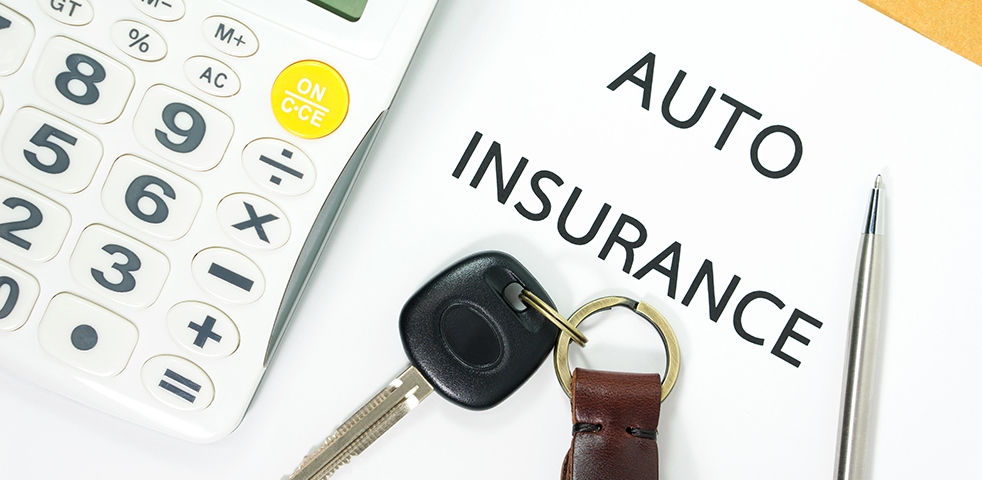Auto insurance
Auto insurance covers cars, trucks, automobiles, and other types of road vehicles. It is often referred to as car insurance, automobile insurance, or automobile insurance. Its primary purpose is to provide financial protection for bodily injury or physical damage in car accidents, as well as against any liability arising from such incidents. In addition to financial protection against theft, auto insurance can also cover vehicle damage caused by non-traffic-related events, including locked keys, natural or weather-related disasters, and collisions with stationary objects. The exact terms of car insurance vary depending on local laws in each area.

Australia
Each state in Australia has a different Compulsory Third Party Insurance Program (CTP). In a car accident, CTP only pays your personal injury liability. Insurance against fire, theft and third party property damage is available separately.
Damage to other people’s cars, insured vehicles and other property of third parties is covered by comprehensive insurance.
Third-party property damage insurance does not apply to insured vehicles, but it does cover damage to other people’s cars and property.
Covered vehicles are protected against theft and fire through third-party property damage insurance, which also covers damage to other people’s vehicles and property.
Third-Party Insurance That Is Required
All Australian states require CTP insurance, which is paid for when registering the vehicle. This protects vehicle owners and drivers from lawsuits alleging that their negligence resulted in the death or injury of another person. Compensation may be included for any type of physical damage, bodily injury, all reasonable medical expenses for injuries resulting from a collision, lost wages, the price of medical services, and, in some circumstances, pain and suffering. May be covered with CTP. In Australia, systems varied from state to state. If the insured causes an accident, car repair costs, property damage, medical expenses, etc. of the other party will be paid by third party property insurance or comprehensive insurance. It should not be confused with mandatory third-party insurance, which covers death or serious injuries resulting from a car accident. To register a car in New South Wales, you must first obtain insurance. Due to their color, they are often called “green slips” [4]. There are five licensed CTP insurers in New South Wales. Allianz holds one license and Suncorp holds two licenses each for GIO and AAMI. QBE and NRMA Insurance (NRMA) hold the remaining two licenses. CTP insurance, licensed by GIO, is also available from APIA, Shannons and InsureMyRide insurance.
In the Australian Capital Territory, additional private provision programs are available through AAMI, APIA, GIO and NRMA. The CTP is paid when the vehicle owner registers it. In Queensland, the CTP is included in the cost of registering the car. Allianz, QBE and Suncorp are the private insurers available and there are government price controls.[5] In South Australia, the Motor Accident Commission stopped providing CTP from July 2016. Currently, the government has authorized four private insurers (AAMI, Allianz, QBE and SGIC) to offer insurance to CTP SA. Vehicle owners will be able to choose their own CTP insurer from July 2019, while new insurers will be able to enter the market.[6] Three states and one territory do not have private CTP plans. The Victorian Transport Accident Commission provides CTP through a charge included in the vehicle registration price (known as a TAC charge). In Tasmania, the Motor Accident Insurance Board operates a similar program.[7] In Western Australia, the Insurance Commission of Western Australia (ICWA) runs a similar program. The Territorial Insurance Office (TIO) oversees the administration of the Northern Territory Scheme.
Bangladesh
The liability limits for all types of car insurance plans in Bangladesh are set by law. Current limitations make it impossible to offer adequate compensation to victims. The following amounts apply to automobile liability insurance: BDT 20,000 for death, BDT 10,000 for serious injuries, BDT 5,000 for personal injury and BDT 50,000 for property damage. This amount includes both bodily injuries and damage to third-party property. [References needed] Government authorities are currently reviewing the limits.
Canada
Public auto insurance systems are available in several Canadian provinces, including British Columbia, Saskatchewan, Manitoba, and Quebec. Private insurance is available in the rest of the country. In Quebec, third party insurance is mandatory and privatized. Everything except the vehicle is covered provincially. Each state determines what benefits are included in the minimum required auto insurance coverage and what benefits are available to those seeking additional coverage. Basic auto insurance is required throughout Canada, with some exceptions, such as government vehicles. All provinces except Newfoundland and Labrador require accident benefit coverage. All provinces in Canada provide accident victims with access to some form of no-fault insurance. .

The degree to which tort or negligence is emphasized varies from state to state. An international license can be used for three months, and foreign drivers entering Canada can drive any car that the license allows. International drivers are required by law to purchase Canadian insurance within three months of entering Canada. After that, the International Insurance Bonus (IIB) is paid. The IIB is reset each time an international driver enters the country. Damage to the driver’s own vehicle is optional. However, in Saskatchewan, SGI includes collision coverage (with a deductible of less than $1,000 as a collision damage waiver) in its basic insurance package. This is a notable exception to the rule. Less than 0.5 per cent of Saskatchewan residents choose to purchase auto insurance through the liability system, but this system is still available. The “Facilities Association Residual Marketplace” (also known as “FARM”) provides facilities insurance policies as a last resort to high-risk individual and commercial drivers who are unable to purchase coverage on the voluntary market (regular auto insurance). Car insurance is required in Canada.
China
Carriage rights insurance provides protection against property damage and injury to third parties. The minimum liability coverage is RMB 180,000 for death and injury/accident, RMB 18,000 for medical expenses, and RMB 2,000 for physical loss. Commercial auto insurance, sometimes called supplemental liability insurance, provides additional protection. Up to 10,000,000 RMB excluding driver and passengers. There are also excess waiver insurance options that eliminate all deductibles.
Hong Kong
Section 4(1) of the Motor Vehicle Insurance (Third Party Risks) Ordinance (Chapter 272 of the Laws of Hong Kong) requires all motor vehicle users, including persons licensed to use a motor vehicle, to have insurance or other forms of insurance. Protects against third party risks. If a collision occurs due to the use of the insured vehicle, the third party insurance protects the policyholder against liability for third party death or personal injury up to HK$100,000,000 and/or third party property damage up to HK$2,000. Hong Kong dollar. Comprehensive car insurance is also provided.
Macau
Minimum Third Party Liability (“TPL”) coverage, as required by law, protects against legal liability resulting from traffic accidents that result in loss and damage to third parties. 1,500,000 MOP per accident and 30,000,000 MOP per year. [References required] Comprehensive auto insurance is also offered.
Indonesia
In Indonesia, third-party vehicle insurance is mandatory for all cars and motorcycles. Otherwise the vehicle will not be considered legal. This mandatory car insurance is officially known as the Mandatory Road Accident Compensation Fund (Indonesian: Dana Pertanggungan Wajib Kecelakaan Lalu Lintas Jalan, DPWKLLJ). Therefore, drivers cannot use their cars until they have car insurance. Introduced in 1964, DPWKLLJ is dedicated to personal injuries and is operated by state-owned company PT Jasa Raharja (Persero)[id]. DPWKLLJ is included in the annual vehicle tax paid to the Regional Samsat (Sistem Administrasi Manunggal di bawah Satu Atap) responsible for cars and roads, and is levied through an annual insurance premium known as mandatory contribution to the traffic accident fund (Indonesian: Sumbangan Wajib) . Dana Kecelakaan Lalu Lintas Jalan, SWDKLLJ).
History
In urban areas, automobiles became widely used after World War I. Although cars were becoming faster and more dangerous at that time, no country in the world still required car insurance. This meant that drivers often had to pay large bills for vehicle and property damage, and injured victims received little compensation after a collision.
In the United Kingdom, the Road Traffic Act of 1930 established a mandatory motor insurance program. This ensured that anyone who owned or operated a vehicle on public roads would have insurance coverage if found responsible for injury or death. In 1939, a similar law was passed in Germany, known as the “Law on the Implementation of Compulsory Insurance for Motor Vehicle Owners.”


